
Emperor Red Snapper
Lutjanus sebae
Mandarin: 红狮 Hong Shi
Malay: Ikan Merah Coreng, Merah Boring
Teochew/Hokkien: Ang Sai
FishBase link
I have grouped these fish together not just because they are all “snappers” but since this is a food blog, the emphasis is on how they are usually eaten! Any serious Singaporean foodie will tell you straight away that these are the fish which are most commonly used for that most iconic of Singaporean dishes — Fish Head Curry!
Another reason I am grouping it together is that in Teochew/Hokkien, all these fish are called Ang (red) something. So you have Ang Sai, Ang Zhor, Ang Goi and Ang Goli. The casual foodie might not care too much about what kind of fish he is eating but for the gastrogeek, it is an opportunity to impress your fellow diners and perhaps score a few points with a prospective girlfriend’s mother.
The flesh of these fish are quite similar. They are fine, tender and when you prise the flesh apart, they don’t flake like grouper. Their texture is excellent when cooked in a curry, being able to hold its shape but quickly absorbing the curry when lifted from the bones

The Emperor Red Snapper is a superb eating fish and is considered one of the best fish for fish head curry although not many places actually serve it because of its higher price. They grow to quite a large size which means that the fish head will contain a lot more gelatinous bits which is much appreciated by the Chinese. Two places which you can find this fish being served are Zai Shun and Ocean Curry Fish Head.
The juvenile fish bears several distinct bands on its body which makes it easily distinguishable from the other snappers. There are a few references which state that the stripes look like a “broad arrow”, but I have yet to figure out how it even vaguely resembles an arrow! These stripes fade as the fish grows into adulthood such that they are an homogeneous red colour when fully grown. They are known in Australasia as “Government Bream” perhaps because the red stripes give the impression that it is entangled in red tape or that it is reminiscent of the symbol for government property. (1) They can grow up to 100cm but the largest usually seen at the market are around 60cm.
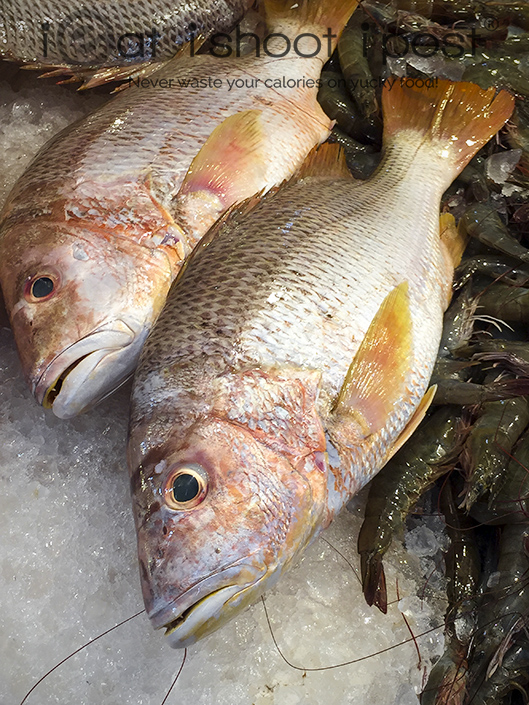
John’s Snapper, Golden Snapper, Moses Perch
Lutjanus johnii (Bloch, 1792)
Mandarin: 紅鰽(Hóng qiú), 红皂 (Hóng zào), 红潮 (Hóng cháo)
Malay: Ikan Jenahak, Ungah
Teochew/Hokkien: Ang Zhor
Fishbase Link

According to my regular fishmonger at Lor Ah Soo market, the Ang Zhor is the best eating fish amongst the snappers. These fish are usually silvery bronze red in colour and often have a black blotch above the lateral line two thirds of the way down from head to tail. Each scale has a distinct dark spot on it which makes it look as if there are several dotted lines radiating from the head to the tail of the fish. They can grow to 70cm but the largest seen at the market are mostly 50cm. The table sized fish are much sought after and so are also the most expensive.
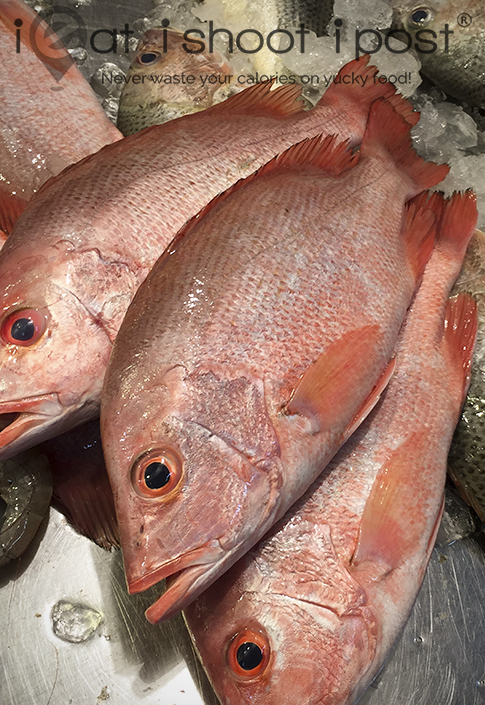
Crimson Snapper
Lutjanus erythropterus
Mandarin: 红鸡 (Hóng jī)
Malay: Ikan Merah, Merah Pucat
Teochew/Hokkien: Ang Goi, Chun Goi
Fishbase Link
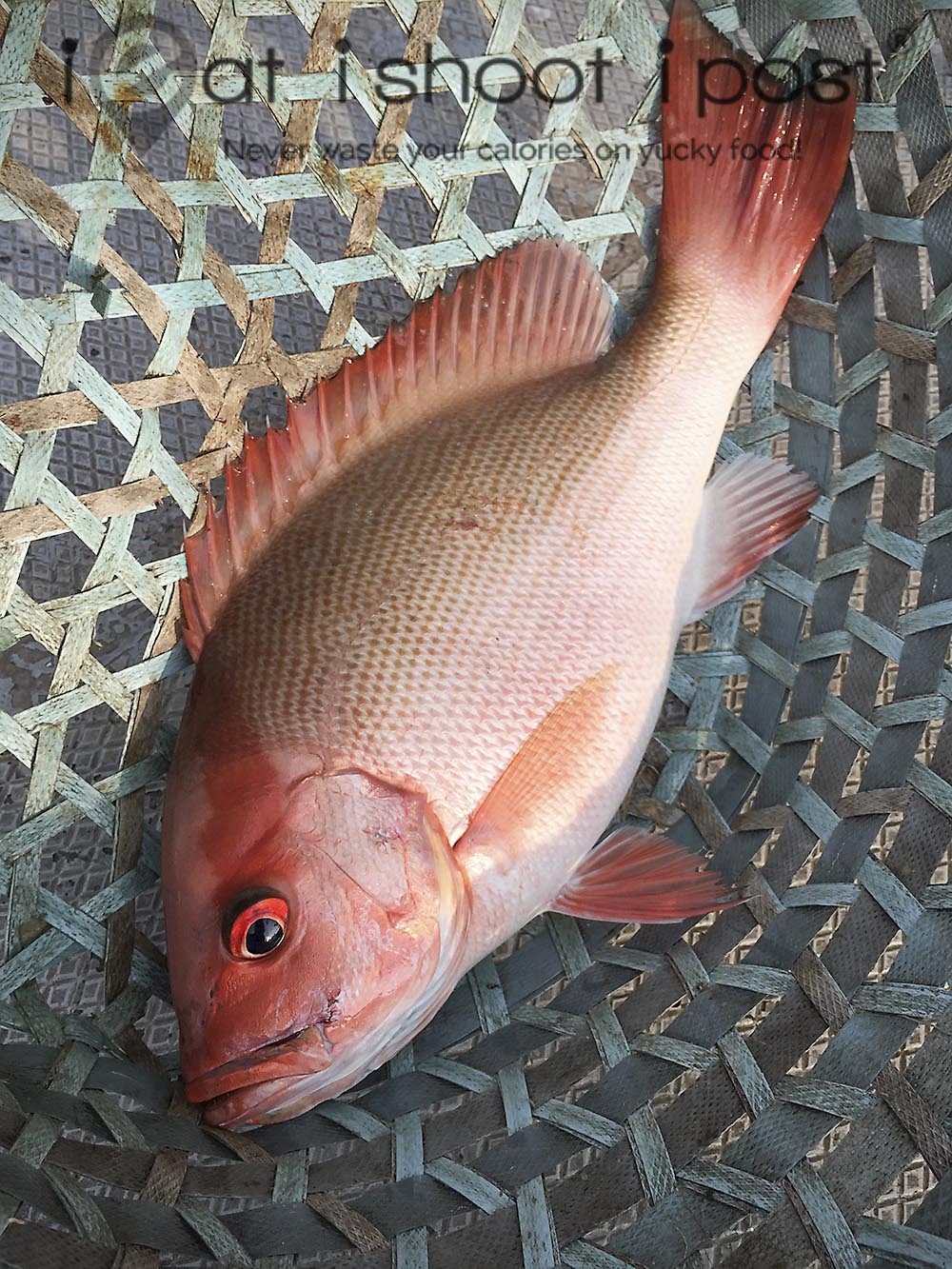
Most of the Crimson snapper that you see in the market which are table size (30cm) are locally farmed fish. They are good eating fish, even for the farmed variety. Most Zi Chars use Crimson snapper for fish head curry because their supply is more predictable and being a smaller fish, each pot of curry is less expensive than the speciality fish head curry restaurants that use wild caught fish.
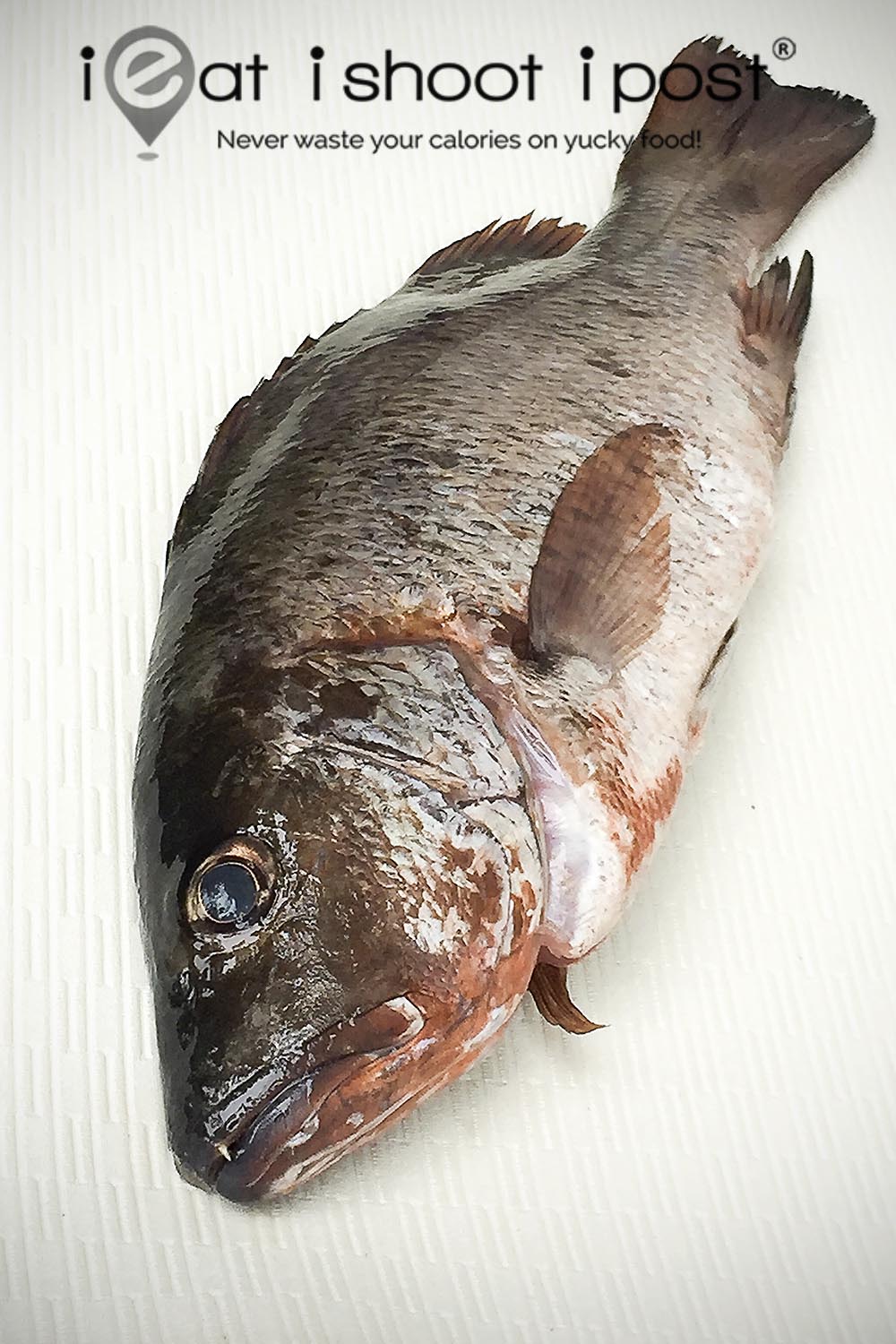
Mangrove Red Snapper (Mangrove Jack)
Lutjanus argentimaculatus
Mandarin : 赤鰽 (Chì qiú), 红家定 (Hóng jiā dìng)
Malay: Ikan Merah, Kakap Merah, Siakap Merah
Teochew/Hokkien: Ciak Zhor
Fishbase Link
Mangrove Jacks are not usually found in the markets. I had the good fortune to catch a few on a recent fishing trip and so I managed to take a photo of it. These fish can grow to a maximum length of 120cm but commonly they are 50cm to 80cm. They are often found around mangrove swamps, hence the name. These fish have prominent canine teeth sticking out of the upper lip which can cause quite a bit of pain for the unwary fishermen!
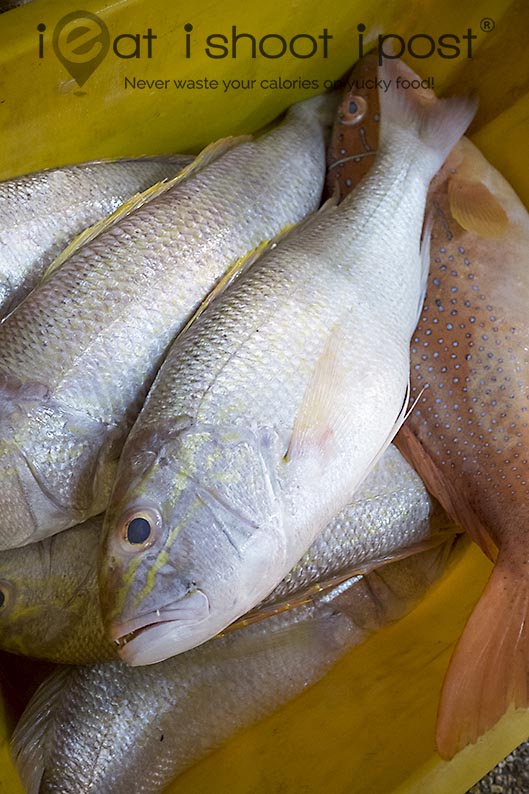
Goldbanded Jobfish
Pristipomoides multidens
Mandarin: 多牙紫鱼 (Duō yá zǐ yú), 黄吻姬鲷 (Huángwěnjī diāo), 嘉乐 (Jiā lè)
Malay Name: Kerisi Bali, Ibu Kerisi
Teochew/Hokkien: Ang Goli
Fishbase Link
Goldbanded jobfish are the commonest fish used for fish head curry amongst the more specialized fish head curry restaurants. They are easily identified by several golden bands running horizontally across the upper part of its head. They can grow up to 70cm but the common size seen at the market is 50cm. They are usually quite big and the head fits nicely into a large claypot which is why they are so popular for fish head curries! According to my fishmonger, the best ones come from Sabah. The flesh of the fish good eating but less tender when compared with the Emperor Red Snapper and Golden Snapper. Ang Goli are used at Hooked on Heads, Lau Hock Guan Kee and Chop Lian Hin.
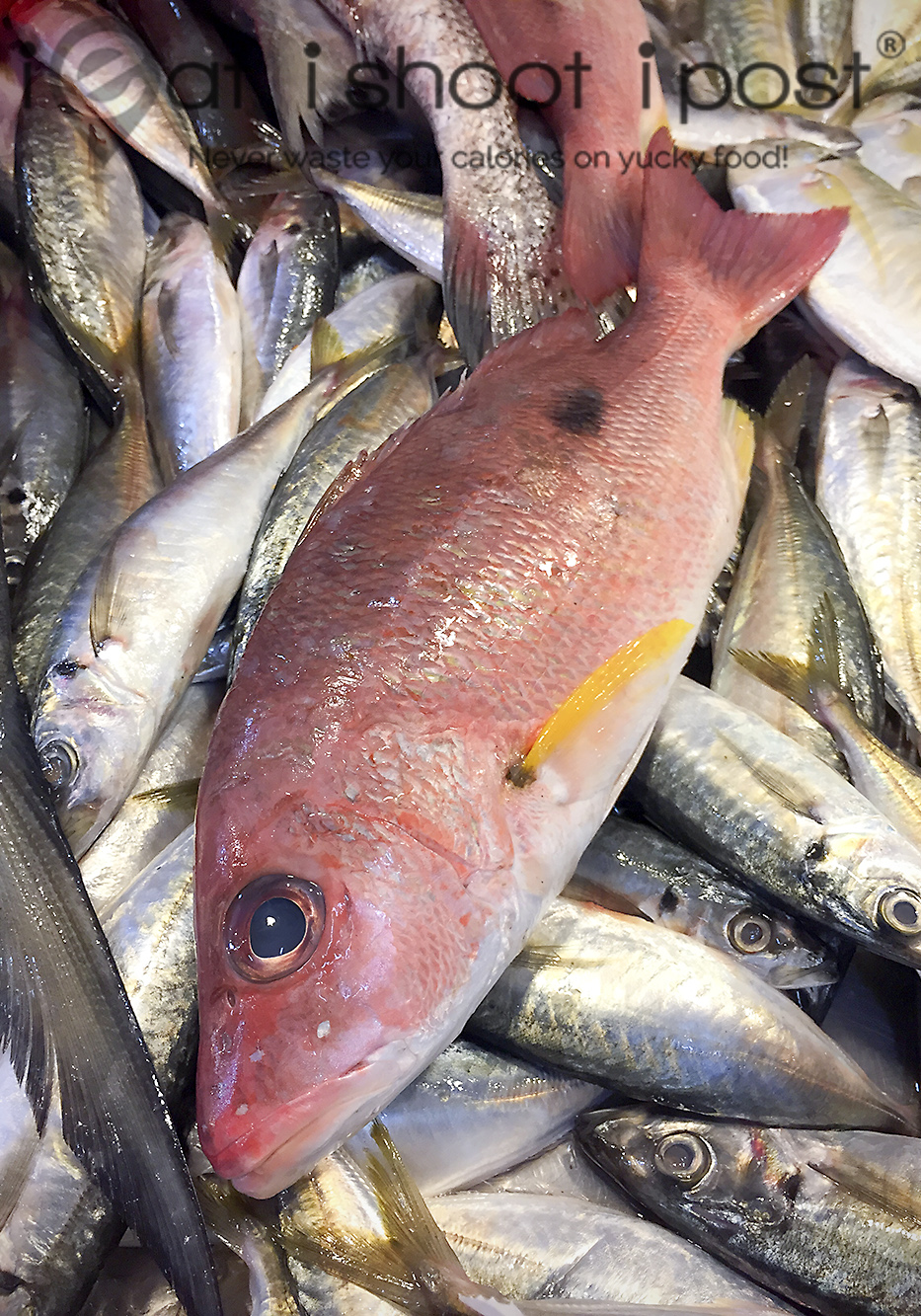
Russel’s Snapper/Moses Snapper
Lutjanus russelli (Bleeker, 1849)
Mandarin: 紅鰽痣(Hóng qiú zhì), 红皂记 (Hóng zào jì)
Malay: Ikan Tanda
Teochew/Hokkien: Ang Zhor Kee
Fishbase Link
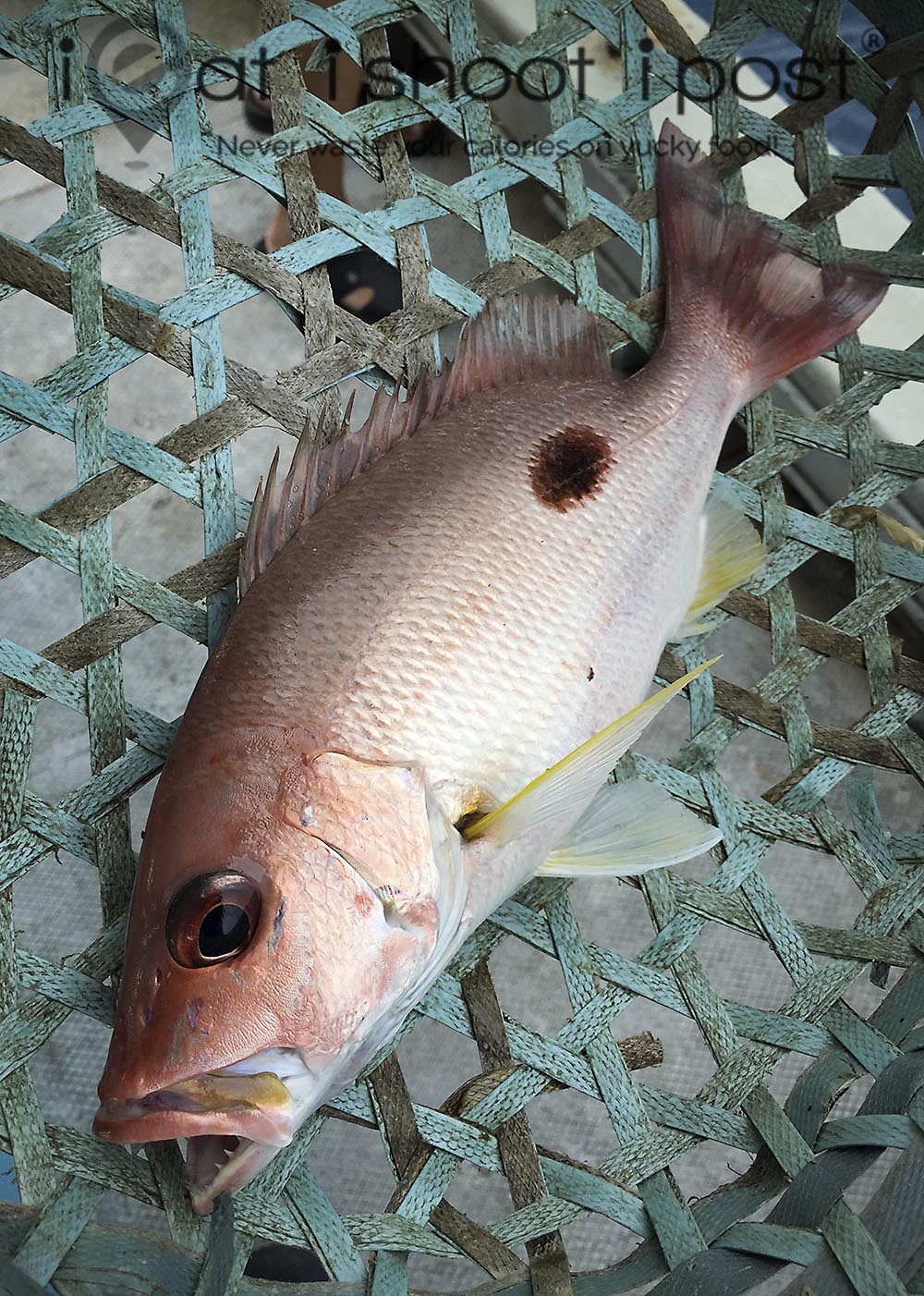
This snapper can grow to 45cm but are commonly around 30cm. As such they are not usually used for fish head curry. But I have included it here because it is also called Ang Zhor like the John’s snapper but with a “Kee” (black spot) at the end of the name to differentiate it from the John’s snapper. It is usually silvery white with a pinkish hue and there is a black spot near the back as well as at the base of the pectoral fins.
References:
1. Seafood of South East Asia, Alan Davidson 2nd Ed (2003)
2. http://www.talkaboutfish.com/




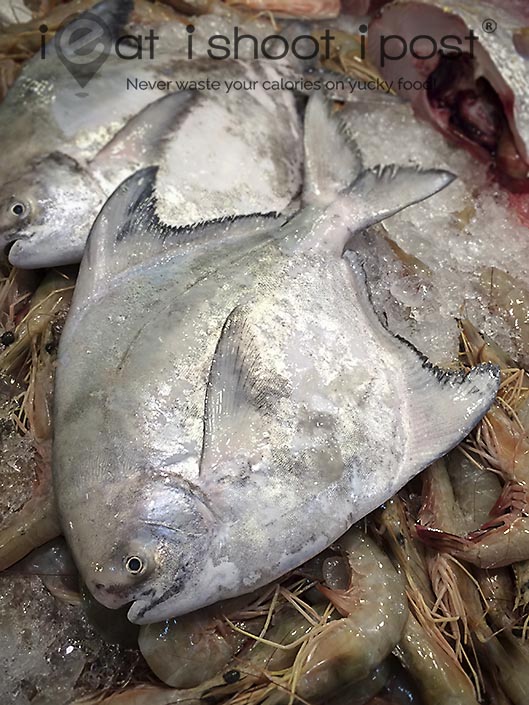
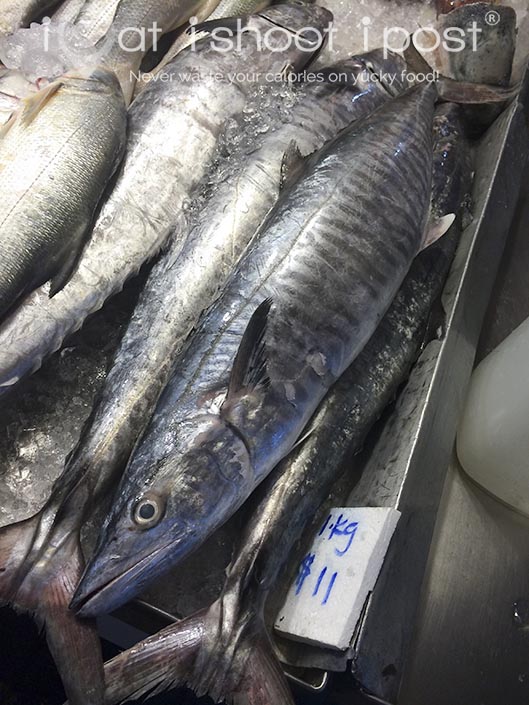
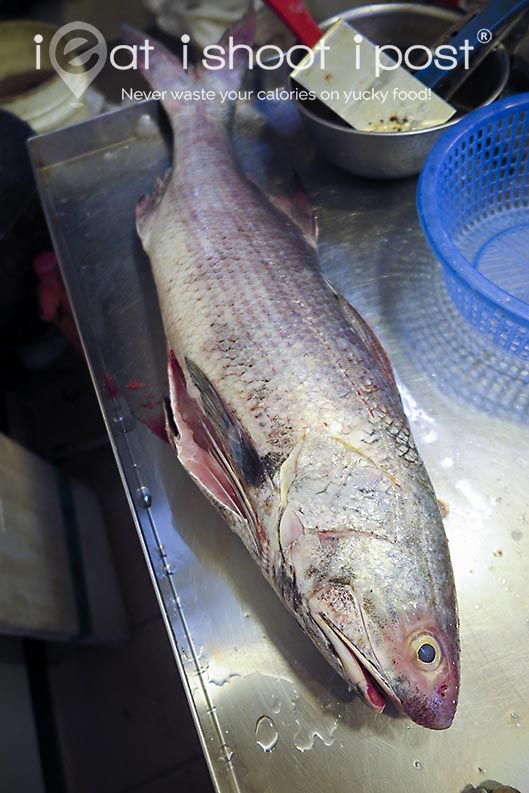
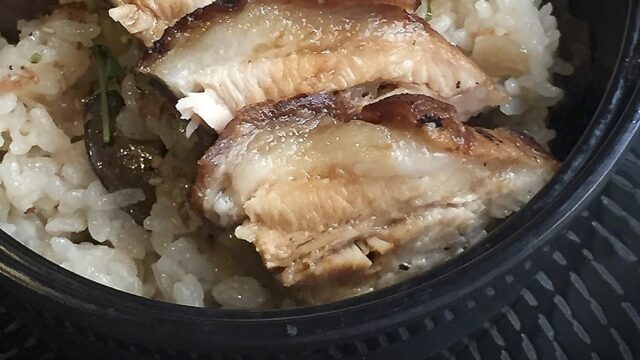
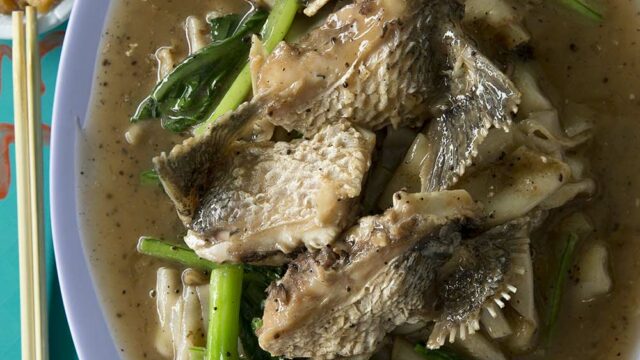



All of these fishes are a fisherman’s dream fish, good fighting good eating!
Yes, I agree!
I have found memories of going fishing with my dad. We would bring home a bevy of red snapper, rock fish and ling cod.
Those were the days!
Which one in the list are the 紅魚 (Mandarin) ? I got confuse with 紅魚 which suppose to be translated as Red Snapper and there is variety of red snapper.
What is usually called 紅魚 is not listed in the blog. They are actually threadfin breams: http://www.talkaboutfish.com/red-fishes-basses-congers-etc/bream-threadfin-bream